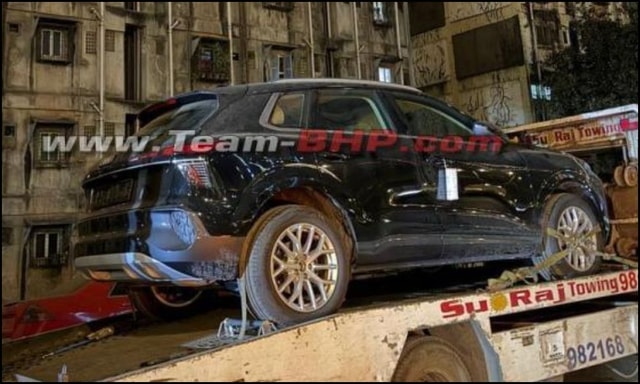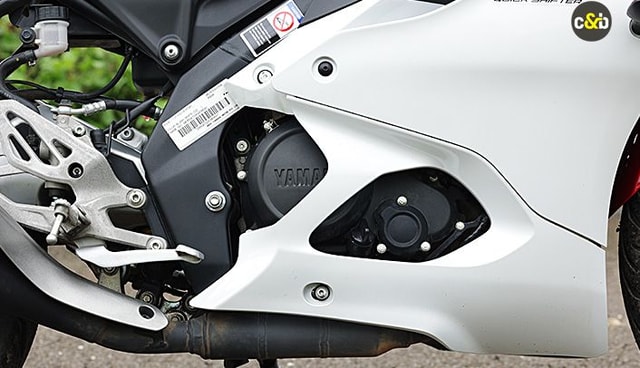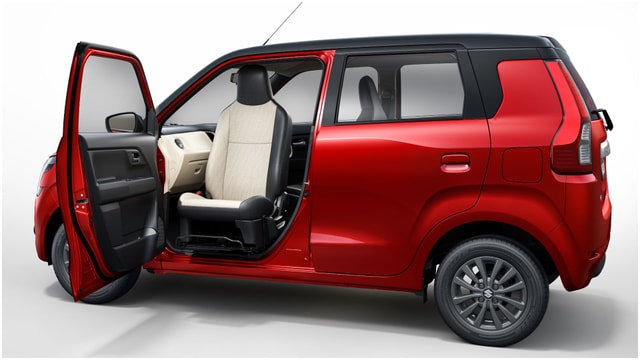Bought Or Sold A Used Car? Here's How to Transfer the Vehicles Registration

Bought or sold a used car? Here's how to transfer the vehicle's registration!
Process, fees and required documents explained!
Within the home RTO
The seller and the buyer have to sign Form 29 and Form 30 and submit these to the RTO. Form 35 also has to be submitted in case the vehicle is still under hypothecation, along with the NOC availed from the bank.
To a different RTO within the state
The seller and the buyer have to sign Form 28, Form 29 and Form 30 and submit these at the local RTO of the seller, in order to secure the NOC. This NOC, along with Form 29 and Form 30 has to be submitted at the buyer's RTO for transfer of registration. Form 35 also has to be submitted in case the vehicle is still under hypothecation, along with the NOC availed from the bank.

To a different state
The seller and the buyer have to sign Form 28, Form 29 and Form 30 and submit these at the RTO of the seller to secure the NOC. This NOC, along with Form 29 and Form 30 has to be submitted at the buyer's RTO for transfer of registration. The vehicle has to be re-registered in the buyer's state, and this involves payment of Road Tax. Form 35 also has to be submitted in case the vehicle is still under hypothecation, along with the NOC availed from the bank.
Forms
- Form 28 - Application for No Objection Certificate (NOC) for transfer of ownership
- Form 29 - Notice of transfer of ownership
- Form 30 - Application for intimation and transfer of ownership
- Form 35 - Notice of termination of agreement of hypothecation (for vehicles that were purchased with a loan)
Vehicle documents
- Original registration certificate (RC)
- Pollution under control certificate (PUC) copy
- Valid insurance copy
- Imprint of chassis number and engine number on a slip of paper, made with pencil
- Green tax certificate (for vehicles older than 15 years)
Seller's documents
- PAN card copy
Buyer's documents
- PAN card copy
- Address proof (electricity, telephone, water, gas bill, Aadhar card, or any other KYC document with the permanent address on it)
- Proof of date of birth (any other KYC document with the date of birth on it)
- Passport-size photo
What is hypothecation, and how to remove it -
Hypothecation is the practice where you pledge the vehicle to a bank when applying for a loan, wherein the bank keeps it as collateral. So technically, even though you may physically have possession of your vehicle, your vehicle belongs to the bank.
You can remove the hypothecation from the vehicle's registration only after repaying the entire loan to the bank. After paying all the EMIs, you can apply for a no objection certificate (NOC) which states that no dues are pending on the loan. The bank will send you this NOC by post. Copy of this NOC needs to be submitted to the RTO, which will then update the RC document.

Fees
A fee of Rs 150 in case of two-wheelers and Rs300 in case of four-wheeler is required to be paid as transfer fee. This can be paid online or at the RTO, while submitting the forms.
Trending News
 1 min readYamaha YZF-R2 Name Trademarked In India
1 min readYamaha YZF-R2 Name Trademarked In India 1 min readTriumph Tracker 400: In Pictures
1 min readTriumph Tracker 400: In Pictures
Latest News
 car&bike Team | Dec 19, 2025Next-gen Audi Q3 Spied In India Ahead Of Launch In 2026Third-gen Q3 made its global debut in mid-2025, getting notable tech upgrades and electrified powertrain options.2 mins read
car&bike Team | Dec 19, 2025Next-gen Audi Q3 Spied In India Ahead Of Launch In 2026Third-gen Q3 made its global debut in mid-2025, getting notable tech upgrades and electrified powertrain options.2 mins read car&bike Team | Dec 19, 2025Yamaha YZF-R2 Name Trademarked In IndiaThe Yamaha R15, one of Yamaha India’s most popular motorcycle models, is likely to continue, even when the R2 finally makes it debut.1 min read
car&bike Team | Dec 19, 2025Yamaha YZF-R2 Name Trademarked In IndiaThe Yamaha R15, one of Yamaha India’s most popular motorcycle models, is likely to continue, even when the R2 finally makes it debut.1 min read car&bike Team | Dec 18, 2025KTM 160 Duke With TFT Dash launched At Rs 1.79 LakhThe 5-inch colour TFT dash is borrowed from the 390 Duke and is shared across the brand’s sub-400cc lineup.2 mins read
car&bike Team | Dec 18, 2025KTM 160 Duke With TFT Dash launched At Rs 1.79 LakhThe 5-inch colour TFT dash is borrowed from the 390 Duke and is shared across the brand’s sub-400cc lineup.2 mins read car&bike Team | Dec 18, 2025Lamborghini Urus Seized By Cops Following Viral Clip Of Speeding On Bandra-Worli Sea LinkThe car was seized after a video of it allegedly overspeeding on the Bandra–Worli Sea Link, where the speed limit is capped at 80 kmph, went viral.2 mins read
car&bike Team | Dec 18, 2025Lamborghini Urus Seized By Cops Following Viral Clip Of Speeding On Bandra-Worli Sea LinkThe car was seized after a video of it allegedly overspeeding on the Bandra–Worli Sea Link, where the speed limit is capped at 80 kmph, went viral.2 mins read car&bike Team | Dec 18, 20252025 Ducati XDiavel V4 India Launch Details RevealedThe new Ducati XDiavel V4 will be launched towards the end of December 2025 and will sit alongside the standard Ducati Diavel V4.3 mins read
car&bike Team | Dec 18, 20252025 Ducati XDiavel V4 India Launch Details RevealedThe new Ducati XDiavel V4 will be launched towards the end of December 2025 and will sit alongside the standard Ducati Diavel V4.3 mins read Amaan Ahmed | Dec 18, 2025Maruti WagonR Swivel Front Seat Kit Launched: Check Price, AvailabilityBangalore-based startup TrueAssist Technology Private Limited has developed a mechanism that allows the front passenger seat to swivel outwards, in a bid to improve accessibility for the aged and persons with disabilities.2 mins read
Amaan Ahmed | Dec 18, 2025Maruti WagonR Swivel Front Seat Kit Launched: Check Price, AvailabilityBangalore-based startup TrueAssist Technology Private Limited has developed a mechanism that allows the front passenger seat to swivel outwards, in a bid to improve accessibility for the aged and persons with disabilities.2 mins read
 Bilal Firfiray | Dec 19, 2025Maruti Suzuki e-Vitara Review: Worth The Wait?After a long wait, the first-ever electric Maruti Suzuki is here. It’s the e-Vitara, and it comes with a few promises. But arriving this late, is it worth the wait? Or is it a case of too little, too late?9 mins read
Bilal Firfiray | Dec 19, 2025Maruti Suzuki e-Vitara Review: Worth The Wait?After a long wait, the first-ever electric Maruti Suzuki is here. It’s the e-Vitara, and it comes with a few promises. But arriving this late, is it worth the wait? Or is it a case of too little, too late?9 mins read Bilal Firfiray | Dec 18, 2025Mercedes-Benz G450d: The Subtle Power of EvolutionThe Mercedes-Benz G 450d evolves subtly with more power, improved efficiency, and modern tech, while staying true to the timeless G-Class design. And character.4 mins read
Bilal Firfiray | Dec 18, 2025Mercedes-Benz G450d: The Subtle Power of EvolutionThe Mercedes-Benz G 450d evolves subtly with more power, improved efficiency, and modern tech, while staying true to the timeless G-Class design. And character.4 mins read Janak Sorap | Dec 11, 2025Harley-Davidson X440 T First Ride Review: Smarter and SharperHarley-Davidson has taken the X440 and given it a more focused and engaging twist. The result is the X440 T—essentially the same platform but updated in areas that give the motorcycle more appeal and riders more thrill.5 mins read
Janak Sorap | Dec 11, 2025Harley-Davidson X440 T First Ride Review: Smarter and SharperHarley-Davidson has taken the X440 and given it a more focused and engaging twist. The result is the X440 T—essentially the same platform but updated in areas that give the motorcycle more appeal and riders more thrill.5 mins read Shams Raza Naqvi | Dec 10, 20252025 Mini Cooper Convertible Review: More Colour On Indian RoadsThe updated Mini Cooper Convertible is set to be launched in the Indian market in the next few days. We drive it around Jaisalmer for a quick review.5 mins read
Shams Raza Naqvi | Dec 10, 20252025 Mini Cooper Convertible Review: More Colour On Indian RoadsThe updated Mini Cooper Convertible is set to be launched in the Indian market in the next few days. We drive it around Jaisalmer for a quick review.5 mins read Bilal Firfiray | Dec 8, 2025Tata Sierra Review: India’s New Favourite?Marking its return after a few decades, the reborn Sierra has made everyone sit up and take notice. But is it worth the hype?10 mins read
Bilal Firfiray | Dec 8, 2025Tata Sierra Review: India’s New Favourite?Marking its return after a few decades, the reborn Sierra has made everyone sit up and take notice. But is it worth the hype?10 mins read






























































































































